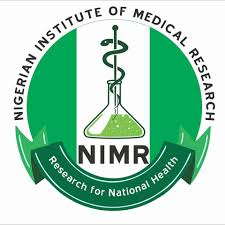The federal government has reaffirmed its commitment to eliminating onchocerciasis, also known as river blindness, within the next five years, through the National Institute of Medical Research (NIMR), as Nigeria races toward meeting the 2030 global elimination target.
Scientists have said that so far, about 37 million Nigerians have been treated with ivermectin, the drug of choice for the disease. At the same time, 10 states have achieved the key milestone of transmission interruption.
Top health officials and scientists, at a research briefing in Lagos, described Nigeria’s campaign against the debilitating parasitic disease as one of the country’s most successful public health efforts in recent years.
River blindness is caused by the parasitic worm Onchocerca volvulus and transmitted through the bite of infected black flies (Simulium damnosum complex). The flies breed around fast-flowing rivers, making the disease endemic in rural communities near such water bodies.
Director of research in Public Health and Epidemiology at NIMR, Dr. Babatunde Adewale, revealed that about 43 million Nigerians remain at risk, especially in under-resourced communities with poor access to clean water, healthcare, and sanitation.
Nigeria began controlling onchocerciasis in the early 1990s through Mass Drug Administration (MDA) using ivermectin. However, a significant policy shift occurred in 2009, following global research, including studies from Nigeria, Mali, and Senegal, demonstrating the possibility of eliminating the disease.
“Initially, we believed ivermectin could only control the spread, but further evidence showed that it could lead to full elimination if sustained long enough. The drug kills the microfilariae but requires 12 to 15 years of consistent treatment to outlast the adult worms, which continue to reproduce,” Adewale explained.
Evidence-based monitoring is at the heart of the national elimination program. Adewale’s team at the ONCHO-STH Laboratory in NIMR plays a central role in testing Dried Blood Spots (DBS) in areas that have undergone at least a decade of ivermectin distribution.
“We use the OV-16 serology technique to detect antibodies that signal ongoing transmission. If less than 0.1 per cent of 3,000 samples in a community test positive, that community is considered to have interrupted transmission,” he said.
This process, known as the Transmission Assessment Survey (TAS), is followed by Post-Treatment Surveillance (PTS) for 3 to 5 years to ensure no recrudescence or a resurgence of the infection. Only after that does the area move to Post-Elimination Surveillance, a prerequisite for national certification by the World Health Organisation (WHO).
Adewale disclosed that states, including Kaduna, Nasarawa, Plateau, Anambra, Borno, and Abia, have reached the milestone of transmission interruption so far.
“Ivermectin is safe, has minimal side effects, and is donated freely through international partnerships. That is why it is approved for mass administration. Whether or not someone shows symptoms, if they live in an endemic area, they get treated, and that is what makes this strategy effective,” Adewale stated.
He added that security challenges in certain regions remain a barrier, but the government and partners are working to find alternative ways to deliver treatment.
Dr Oliver Ezechi, research director at NIMR, highlighted the institute’s threefold role in the effort: “We provide technical expertise, laboratory services, and research coordination to support the national program.”
Beyond river blindness, NIMR is expanding its research into co-infections involving soil-transmitted helminths (STH) and Helicobacter pylori, a bacterium linked to stomach ulcers. These studies focus on the role of trefoil factor family (TFF) proteins, which aid intestinal healing.
“We are looking at how these proteins respond when both infections are present, especially in children. This could provide new insights into managing ulcer severity in underprivileged populations,” Adewale said.
With over 37 million people treated, ten states reaching transmission interruption, and rigorous surveillance in place, Nigeria appears to be on a strong trajectory toward national elimination by 2030.
Adewale, however, believes the goal could be achieved even earlier. “We are not just controlling anymore; we are on the track of eliminating river blindness. We believe that in five years, with continued support and coordinated effort, Nigeria can finally be declared free of onchocerciasis,” Adewale affirmed.
Director General of NIMR, Professor John Oladapo Obafunwa, praised the robustness of Nigeria’s public health strategy while offering insights into the disease’s progression.
“The blindness occurs because the microfilariae migrate to the eyes, first affecting the outer layers and then penetrating deeper to the retina and optic nerve. This leads to inflammation and eventual vision loss. But by controlling the parasite early, we can prevent this tragic outcome,” he explained.











